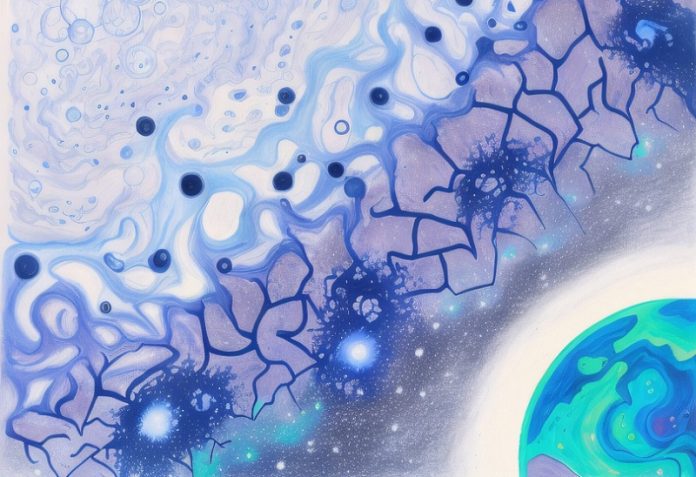
Imagine the universe as a giant cosmic web, a bit like a spiderweb, where galaxies are the shiny dewdrops clinging to it.
Over time, you’d think this web would grow more intricate, following the rules set by Einstein’s famous Theory of General Relativity.
But scientists at the University of Michigan have found something puzzling—the web isn’t growing as fast as it should be.
Let’s dive into what this all means. When we talk about the universe, we often think about stars, planets, and galaxies. But these are just the bits we can see.
A mysterious force called “dark energy” also exists and is responsible for making the universe expand. This dark energy and the force of gravity interact in a cosmic dance that shapes the universe.
Lead researcher Minh Nguyen and his team wanted to understand how this cosmic web grows over time.
They looked at what we call “large cosmic structures,” or the big clumps where many galaxies live close together.
According to Einstein’s theory, these should be getting denser as they pull in more matter through gravity.
However, the scientists found that these structures are not growing as fast as expected.
It seems that dark energy, which usually speeds up the expansion of the universe, is actually putting the brakes on the growth of these large cosmic structures.
How did the researchers figure this out? They used a couple of cool techniques. First, they looked at the Cosmic Microwave Background, which is essentially light left over from just after the Big Bang.
This light has traveled across the universe, and along the way, it gets bent a bit whenever it passes through a large structure, like a galaxy cluster. By studying this light, scientists can learn about the universe’s structure.
Next, they studied the shapes of galaxies. When light from far-off galaxies passes through nearer ones, it also gets a little distorted.
By examining this distortion, the researchers could make educated guesses about how matter is spread out in the universe.
Nguyen said the difference in growth rates becomes more noticeable as we come closer to the present day.
This means the brakes have been applied more recently, and it could help resolve a big argument among scientists about how fast structures should be growing.
So, why should you care? First, this research might solve a long-standing issue in cosmology, the study of the universe.
There’s been a mismatch in how fast scientists think cosmic structures should be growing and what the data says. This new discovery could make those two estimates agree.
Secondly, it suggests that there might be something fundamentally new and strange about how the universe works—something not covered by Einstein’s theory.
“The universe is trying to tell us something,” said Dragan Huterer, another researcher on the project. What that “something” is, we don’t yet know, but scientists are eager to figure it out.
The study was published in Physical Review Letters.
Follow us on Twitter for more articles about this topic.
Source: University of Michigan.



